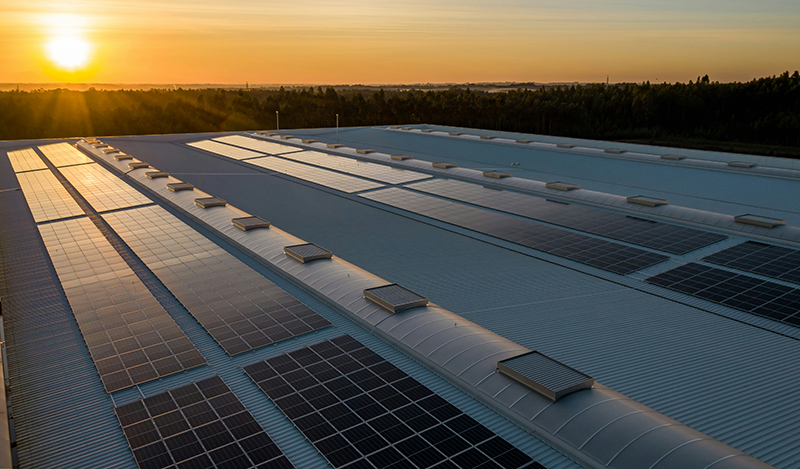
SAVILLS director Thomas McMillan, who is also the chair of Solar Energy Scotland, has welcomed plans by the Scottish Government to ease permitted development rights (PDRs) for rooftop solar.
The measures support ambitions to reduce greenhouse gas emissions to net zero by 2045 whilst also allowing consumers to access cheaper electricity. The proposals are expected to come into effect on Friday 24 May 2024, subject to parliamentary scrutiny.
The changes remove the upper limit of 50kW on the majority of domestic and non-domestic buildings and mean that most rooftop solar projects that are progressed outside of a world heritage site or on listed buildings no longer need planning consent. This includes many projects that are within conservation areas.
Thomas McMillan said, “We have campaigned for this change for a number of years. Simplifying the planning process for rooftop solar will make a substantial difference to Scotland delivering 6GW of solar by 2030. With energy continuing to be stubbornly high, solar remains one of the most effective ways of reducing the charges of running residential and commercial buildings: this change by the Scottish Government makes the process of installing solar quicker and easier and is warmly welcomed.”
The changes bring Scotland largely in line with England where a similar change was made last November. There are some differences between the two nations depending on the type of building. As such, the detailed planning guidelines in each nation should be followed to ensure that a rooftop solar project stays within the permitted development rights.
Changes on both sides of the border are aimed at cutting red-tape in the planning system so homeowners and businesses can install solar panels without being held up by costly delays. The permitted development announcement in Scotland extends beyond rooftop solar into the following areas: New PDRs have been introduced for free-standing solar panels within the curtilage of non-domestic buildings (up to 12sqm). Further, certain restrictions have been relaxed for solar canopies in carparks, including removal of the requirement that these must be primarily for the purpose of powering electric vehicle chargers.








